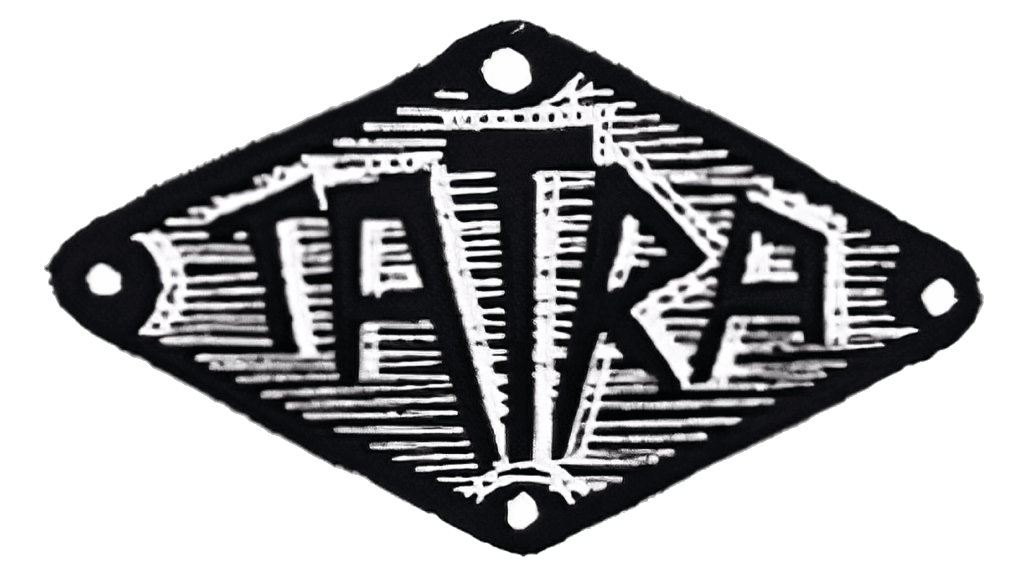Tatra was established in 1850 and is the third (after Daimler and Peugeot) oldest automotive company in the world. It showed its first vehicle, named Präsident, in 1897 and it was not only one of the first cars in the world, but also the first automobile in Central Europe.
Meaning and History
The company’s logo has been changed twice over its entire existence, but the main idea and concept have been preserved in both versions.
1897 – 1920
It was the very first logo, which consisted of a metal text box in the form of a diamond, on which the brand name was engraved.
1920 – 1936
It was the first version of a full-fledged logo. The basis of such a logo was a red circle, in the center of which the brand name was written in white letters. There were combinations of three figures depicted by a white contour under the circle on a red background: a large circle, a smaller circle above it and an inverted triangle without its base.
1936 – 1950
The designers continued to develop the same theme as in the previous logo. There was only a red circle with white letters inside. Still, there was also an image of a red wing above the circle. The wing seemed to grow out of the upper part of the circle.
1950 – 1989
The concept of the logo changed a lot. The logo of that time was only the brand name in black written in bold capital letters.
1989 – 1999
The first logo of the company was in the form of a burgundy circle, a few millimeters around which there was also a burgundy outline. Within the circle, the name of the company was stretched, reminiscent of the fish-eye effect.
1999 – present
In 1999, the rim around the circle became silver, and the circle itself was no longer burgundy, but red. The company name was located in the same way and had the same white color.
Emblem and Symbol
The Tatra emblem is one of the most permanent in the world auto heraldry. The icons of the earliest models are almost indistinguishable from modern ones.








